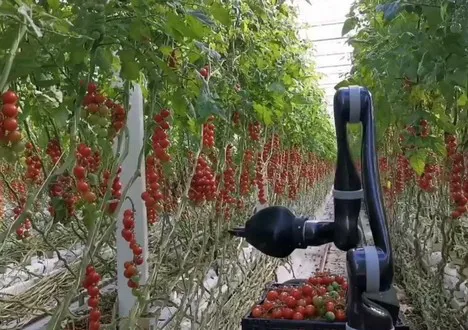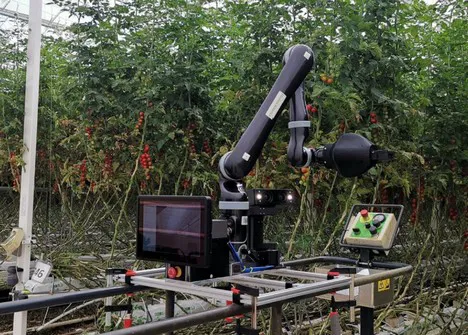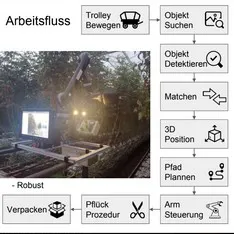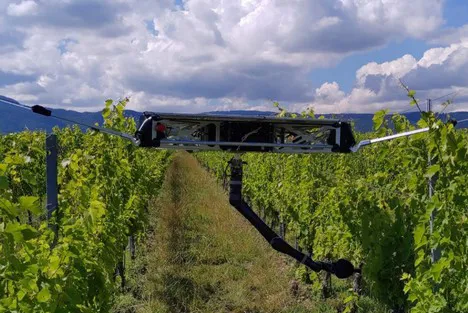Researchers at ETH Zurich have been working on automating the tomato harvest for some two years now. The aim of the project is to develop a modern picking robot based on robotics, image processing, and artificial intelligence (AI) that can also be used in other product areas in the future. ETH researcher Till Karbacher provided insights into the situation and research results to date at this year's Berry Seminar.
 © ETH Zürich - Robotic Systems Lab (RSL)
© ETH Zürich - Robotic Systems Lab (RSL)
Work in the tomato greenhouse usually involves two steps, namely harvesting and packaging the fruit and defoliating the tomato plants. Karbacher: "On average, it takes a total of 2,815 hours of labor to cultivate one hectare per year. A robot, on the other hand, is operational for 4,246 hours per year, including night work. So extrapolating, a single picking robot manages the required output for 1.5 hectares, which is why it can replace 3.5 employees."
It is also a scientifically based innovation, Karbacher says. Behind the technology is two years of research at ETH to be able to detect thin objects correctly. This intensive research was largely funded by Innosuisse R&D. "The research work is undoubtedly bearing fruit: thanks to image processing and AI, the picking robot already manages to harvest tomatoes by the stem, which is why the fruit is not crushed by a gripper. Additionally, we have also managed to develop technology for various tasks in the greenhouse. The next step would be clipping from the stem to the support string."

Advanced AI and control For the full-fledged setup in the greenhouse, an extension of the prototype for the Trolley is being considered, Karbacher continues. That will require some tweaks, he says, such as arm and tooling, cameras and panning system, and computer and software. According to Karbacher, the packing system also needs some adjustments to ensure optimal robot performance.
For the full-fledged setup in the greenhouse, an extension of the prototype for the Trolley is being considered, Karbacher continues. That will require some tweaks, he says, such as arm and tooling, cameras and panning system, and computer and software. According to Karbacher, the packing system also needs some adjustments to ensure optimal robot performance.
Right: Insight into the picking robot's workflow.
The researcher also points to the key role of advanced AI and extensive data sets (such as RGB color photos). "The highly optimized and integrated technology enables millisecond performance. Advanced control is evident in admissibility checks and a robust system, among other things."
Suspended manipulator for harvesting in fruit and wine growing
In addition to the tomato picker, ETH researchers have also developed a picking robot for grape and fruit growing. Thanks to a suspended manipulator, the process is able to harvest grapes and fruit almost autonomously, Karbacher outlines. "It is a completely new way of locomotion. The hanging manipulator is installed on four posts and has access to the orchard from above. The CO2-neutral method with the solar drive is suitable for slopes of up to 45°, making it optimal for hilly areas."

The fruit picker with hanging manipulator
Images: ETH Zurich - Robotic Systems Lab (RSL)
For more information:
Till Karbacher
ETH Zürich - Robotic Systems Lab (RSL)
Stampfenbachstrasse 69
8092 Zürich
Tel.: +41 446338493
[email protected]
www.floatingrobotics.com










